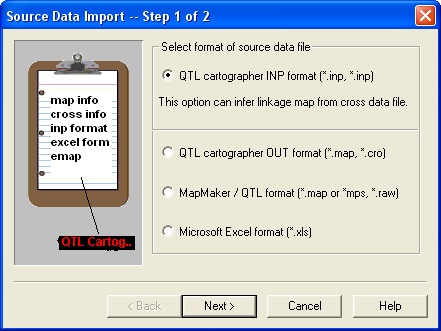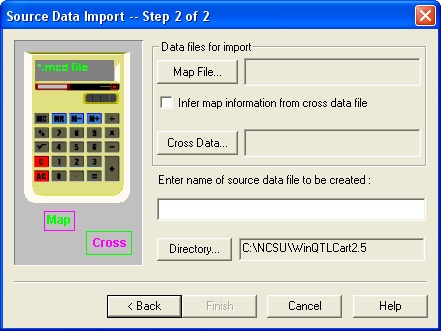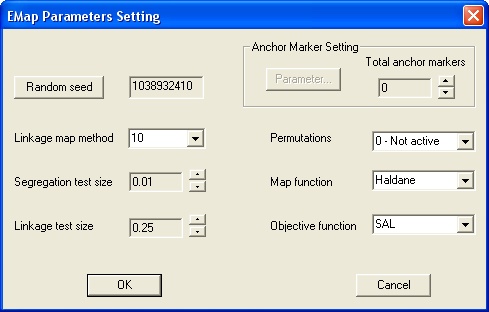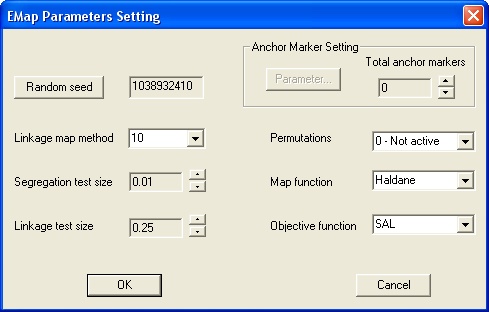
|
Importing files
|
Previous Top Next |
|
Application
|
Formats supported
|
|
MapMaker/QTL
|
.MAP – Map file
.MPS – Map file .RAW – Cross data file |
|
QTL Cartographer
|
.INP – Map and Cross data files
.MAP – Map file .CRO – Cross data file |
|
Microsoft Excel
|
.XLS
|
| Note | If WinQTLCart displays an error message saying the file format is invalid or can't be recognized, then the extension may be wrong or the file's formatting renders it unusable in WinQTLCart. Open the file in Notepad and compare it to one of the sample files in the WinQTLCart directory.
|
|
|
| 1. | Select File>Import. The Source Data Import dialog appears.
|

| 2. | Select the import option you want. The first extension listed for each option is for the Map file, the second extension for the Cross Data file. After clicking Next, the second import dialog appears.
|

| 6. | Click the Finish button.
|

| 7. | Emap parameters setting dialog will pop-out if you use Emap function to infer map information.
|
| · | Click the button to change random seed for Emap function.
|
| · | Linkage map method can take value 10, 11, 12, or 13.
|
| · | Segregation test size can be 0.01 to 0.20.
|
| · | Linkage test size can be 0.15 to 0.49.
|
| · | Now, permutation function is not active.
|
| · | Map function can be Haldane or Kosambi.
|
| · | Objective function can be SAL or SAR.
|
|
|
| 8. | Set anchor markers by using control group of Anchor marker setting .
|
| · | Click to select anchor marker number.
|
| · | Click button parameter to open window of Anchor marker parameters set
|
| · | Select marker label, chromosome and position on chromosome for each marker (Current anchor marker).
|
| · | Click button OK to finish parameters set.
|
|
|

|
|
|
| · | If the import was successful, you'll see a dialog saying the files were successfully imported and the source data file has been saved.
|
| · | If the import didn't work, the reason is likely that the files' formatting does not conform to a standard WinQTLCart expects. To troubleshoot this problem, open one of WinQTLCart's sample files in Notepad and compare it to the file you specified. (The topic MCD file format in this manual also describes the file format.) Correct any formatting problems in your specified file and try importing again. If you're still unsuccessful, please contact WinQTLCart tech support.
|
| · | More detail help for Emap function, see QTL Cartographer's manual.
|
|
|
| · | WinQTLCart includes sample source data files for import. Run some tests using these files or open them up to see the kind of data formatting WinQTLCart expects to see.
|
| · | For Excel worksheets, WinQTLCart expects to see the following worksheet names in the file: BasDat, ChrDat, and CroDat. WinQTLCart includes a sample file, NewMcd.xls, that demonstrates the formatting it expects to see. (If you want, you can make a copy of NewMcd.xls and modify it for your data.)
|
| · | For INP format, one cross data file is needed if you use Emap to infer map information.
|